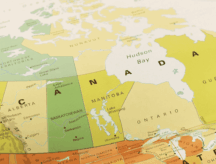Why We Need an Ontario Regional Immigration Strategy
In 2018, the Greater Toronto Area (GTA) welcomed 106,000 new permanent residents. In other words, the GTA welcomed more immigrants than Quebec, Manitoba, Saskatchewan, and the four Atlantic provinces combined.
Immigration to the GTA is not slowing down as the region has already welcomed nearly 60,000 immigrants in the first half of 2019—significantly more immigrants than any province is able to attract over an entire year.
Immigration is undoubtedly beneficial to the GTA as it makes the region one of the most culturally vibrant in the world, and also economically and fiscally healthier than the rest of Ontario. At the same time, it would be beneficial for immigrants, the GTA, and Ontario to identify how to encourage more immigrants to build a life in other parts of the province.
Today, the GTA constitutes 45 per cent of Ontario’s population but attracts nearly 80 per cent of its immigrants. This means that 55 per cent of the province benefits from just 20 per cent of its newcomers. This comes at a time when immigrants are needed more than ever to alleviate the economic and fiscal challenges that are posed by Canada’s ageing population and low birth rate.
Connecting immigrants with good job opportunities in other parts of Ontario would benefit them as they would be able to start their lives in Canada in communities that are more affordable than the GTA.
These communities would benefit from attracting more global talent who would be a major source of labour, consumption, and tax revenues. Meanwhile, the GTA would benefit since this would help to alleviate the infrastructure challenges it faces (e.g., public transit, affordable housing) due to the rapid population growth caused by large flows of Canadians and immigrants alike to the region.
The federal and provincial governments recognize the importance of promoting a broader distribution of immigrants across Ontario. For instance, the Canada-Ontario Immigration Agreement, which guides the relationship between the two parties, formalizes their commitment to work together on this front. In its 2019 budget, the Ontario government noted it will test new pilot programs so that smaller communities can attract more immigrants. The federal government launched a major new initiative of its own earlier this year called the Rural and Northern Immigration Pilot that aims to help communities across Canada including in northern Ontario benefit from more immigration.
Find out if you are eligible for any Canadian immigration programs
In a new report that I authored for the Conference Board of Canada, I provide five additional ways that such efforts can be complemented:
- Create an Ontario Regional Immigration Strategy
- Refine the Ontario Immigrant Nominee Program
- Strengthen economic connections between global talent and employers
- Market communities across Ontario
- Build public awareness on immigration
Stakeholders such as the three levels of government, employer groups, post-secondary institutions, and immigrant-serving organizations need to come together to develop a strategy on how they can work together to achieve their shared objective of promoting immigration beyond the GTA. The strategy should comprise short- and long-term objectives with an operational plan that would enable stakeholders to measure their progress and adjust accordingly to ensure they are on the right track.
The Ontario Immigrant Nominee Program can be refined to award more points to candidates interested in living outside of the GTA. For example, preference could be given to international students and temporary foreign workers who already live in such communities.
Immigrants will not move to these communities unless they have access to job opportunities aligned with their skills. Hence, more efforts can be taken by the likes of business groups such as chambers of commerce to guide employers on the benefits of hiring immigrants and what steps they can take to onboard global talent.
Immigrants to Canada may not know much about the benefits of living outside of the GTA. One way that lesser-known Ontario cities can put themselves on the map is by working with existing diaspora groups in their communities to connect with people of similar backgrounds overseas who are looking to move to Canada.
Finally, while finding a job is the number one priority of immigrants, they also want to arrive to a community that embraces them. Encouraging dialogue within smaller Ontario communities about the need for immigrants can help to promote more welcoming communities.
Immigrants will continue to be lured by the GTA’s vast economy and diaspora communities. Unlike the past, however, Ontario can not afford to sit idle since the large wave of baby boomer retirements over the coming decade will create significant economic and fiscal challenges across the province.
It is high time we identify how the other 55 per cent of Ontario can reap even greater economic and cultural benefits from immigration.
Read the report for free here.
Kareem El-Assal is the Director of Policy & Digital Strategy at Canadavisa.
- Do you need Canadian immigration assistance? Contact the Contact Cohen Immigration Law firm by completing our form
- Send us your feedback or your non-legal assistance questions by emailing us at media@canadavisa.com







